In the Himalayas, glacier-fed rivers are an important source of freshwater for millions of people downstream. The cryosphere being very sensitive to rising temperatures, climate-change induced seasonal snow and glacier melt may have tremendous impact on streamflow in such basins. Its impact may be combined with anthropogenic interventions (e.g. hydropower) and changes in land use. Not only are water resources likely to be significantly affected but also natural hazards, notably glacial lake outburst floods (GLOFs) and landslide lake outburst floods (LLOFs). As a result, it is crucial to understand how snow and glacier melt during both the high and low-flow (monsoon and non-monsoon) seasons influences river discharge and its variation.
This project focuses on a little-known part of the Eastern Himalayas in the state of Sikkim, and on quantifying how climate change is simultaneously impacting both water-related risks and water-related resources in the Himalayas, and crucially how far downstream. It is doing so by combining stable isotope and anatomical analysis of tree rings, starting close to the glaciers that are the source of the Teesta River and continuing over a large distance downstream.

Fieldwork in the Eastern (Sikkim) Himalaya
With the support of the Swiss Polar Institute, two fieldtrips were successfully completed in 2022. The first, during the pre-monsoon period in April and May involved coring trees along the Teesta River and one of its tributaries, starting at the Zemu Glacier, the largest in the Eastern Himalaya. Samples were collected from two tree species, the Bhutan fir (Abies densa) and the Himalayan larch (Larix graffithiana). Sampling considered both trees close to the river and those more distal. The work was completed in a highly inaccessible area of the Himalaya, during a difficult trek, due to missing footpaths and bridges.
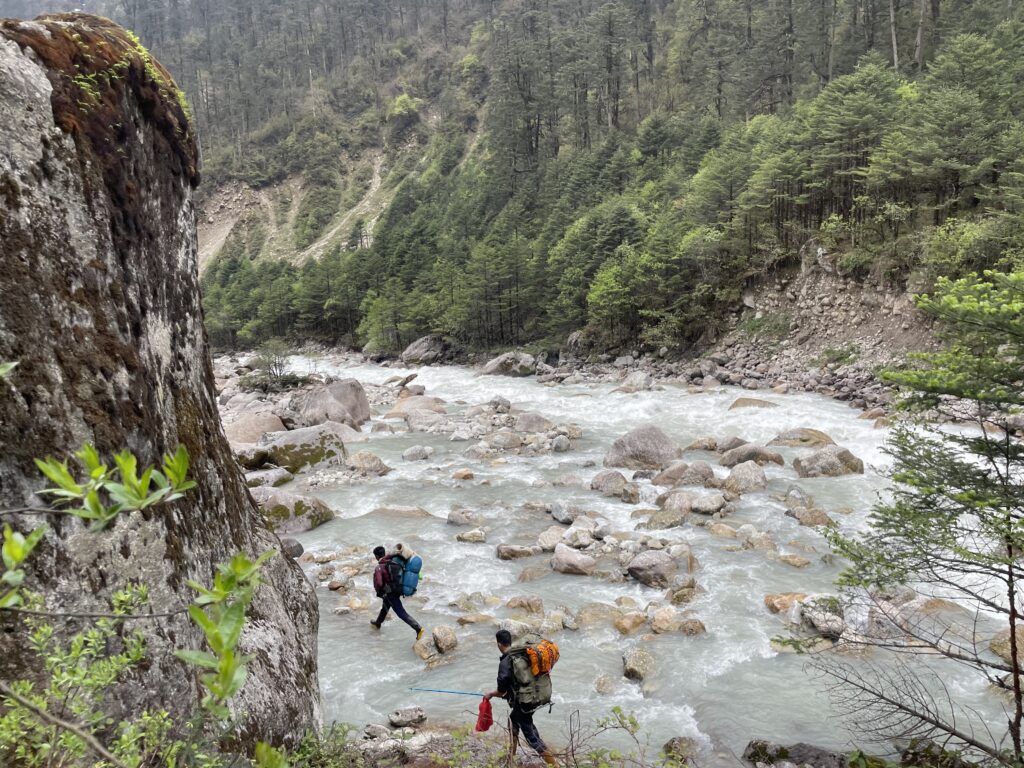

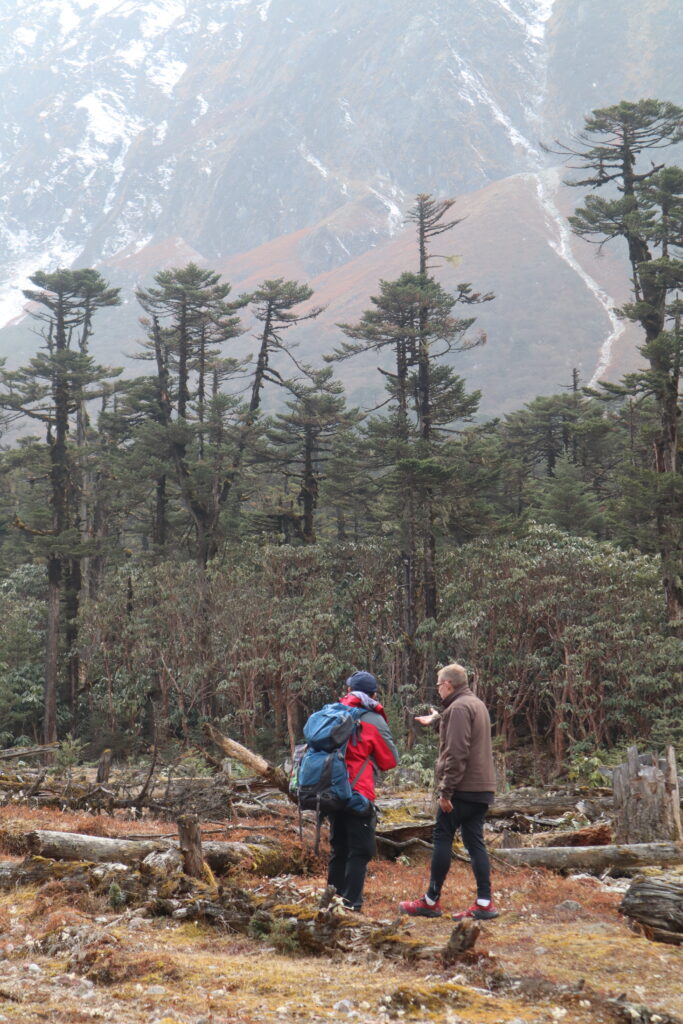
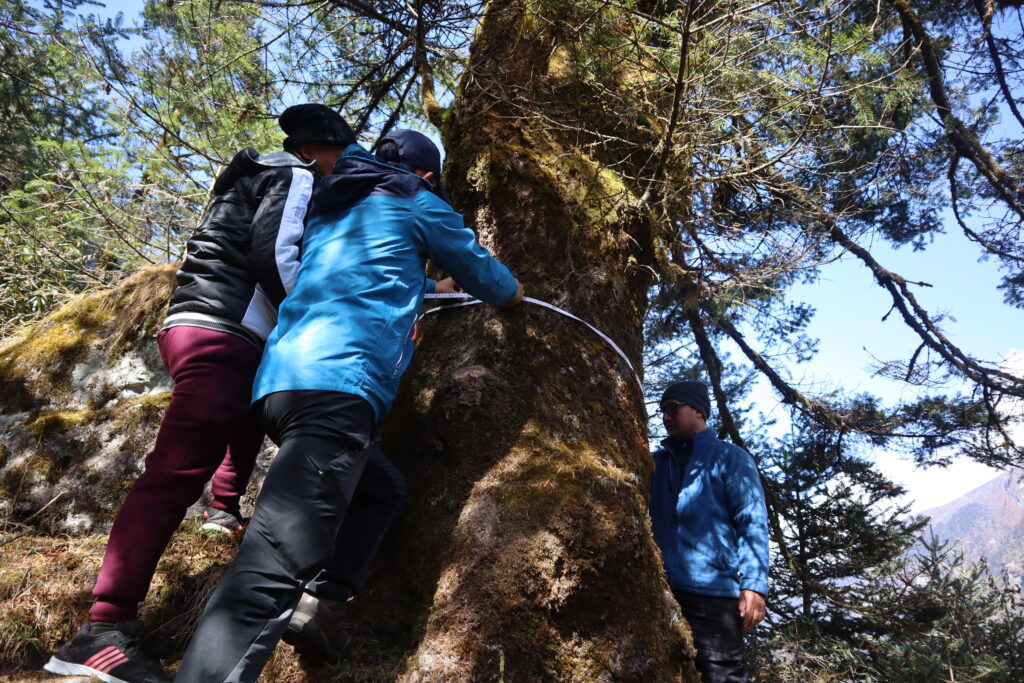
The second visit, in November 2022, considered a tributary of the Teesta River slightly further east, where landslide dam outbreak floods and related natural hazards were suspected. Access was easier. The same tree species as in the first visit were cored to reconstruct flood and landslide histories.
Both field visits suggest that our planned sampling strategy will yield the datasets that our project needs. The cores show distinctive patterns of growth and of changes in tree ring width that could relate to disturbances from landslides and/or flooding. Century-long (>100 years) time series from the old trees will allow longer chronologies to be developed thus allowing analyses into the pre-instrumental period.
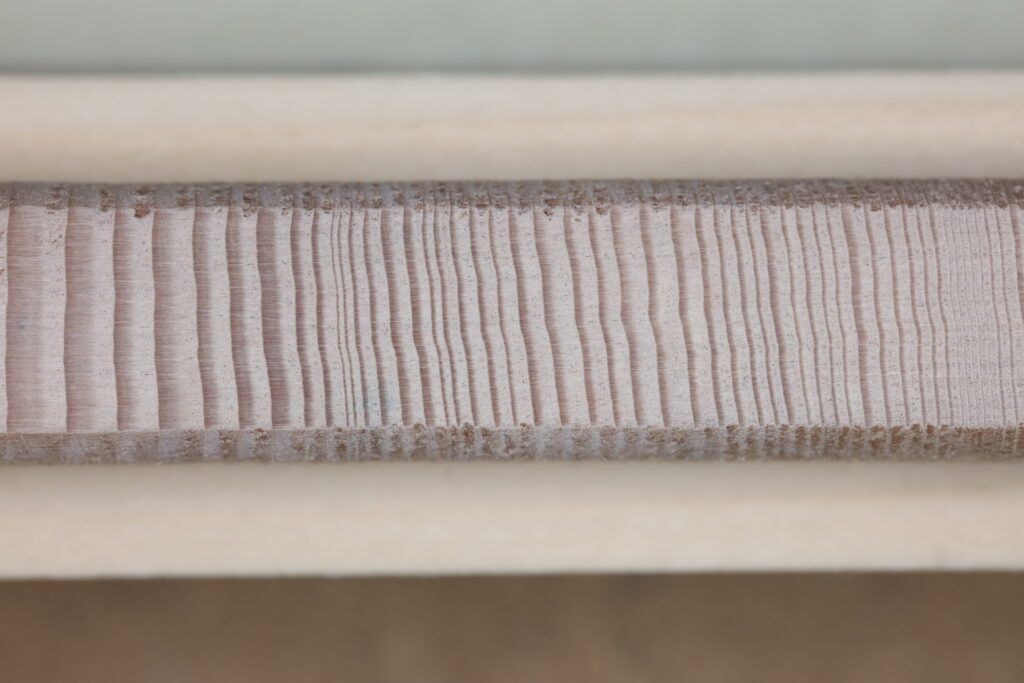
Future prospects of more dendrochronological research for hazards monitoring
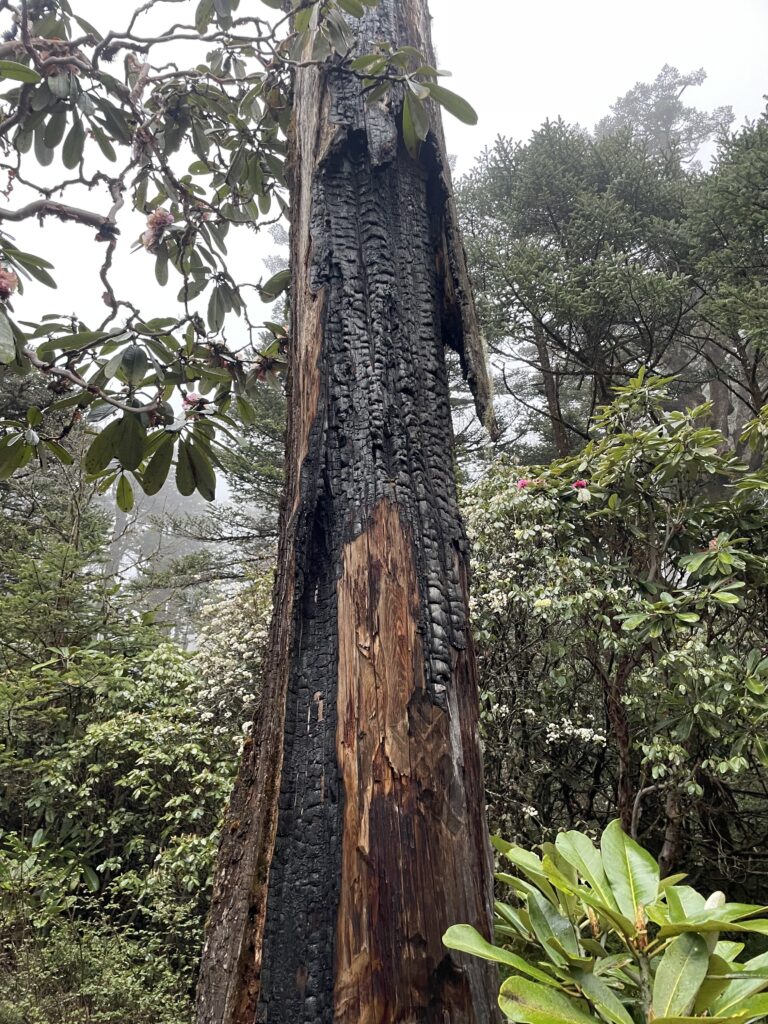
© Nazimul Islam, all rights reserved
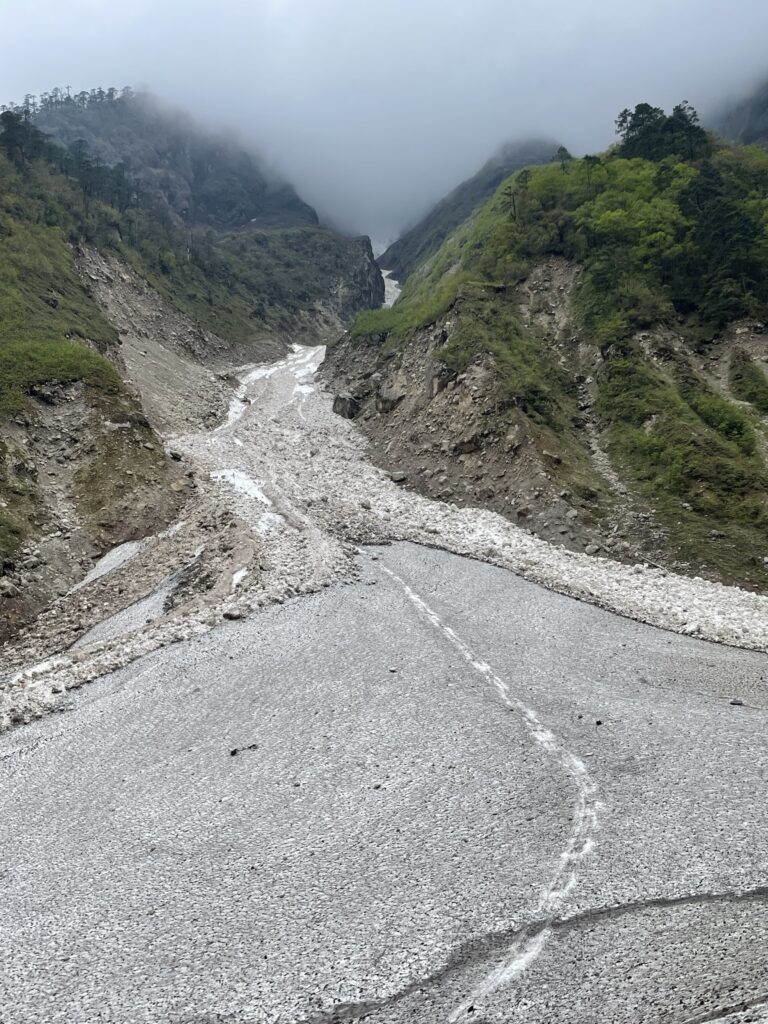
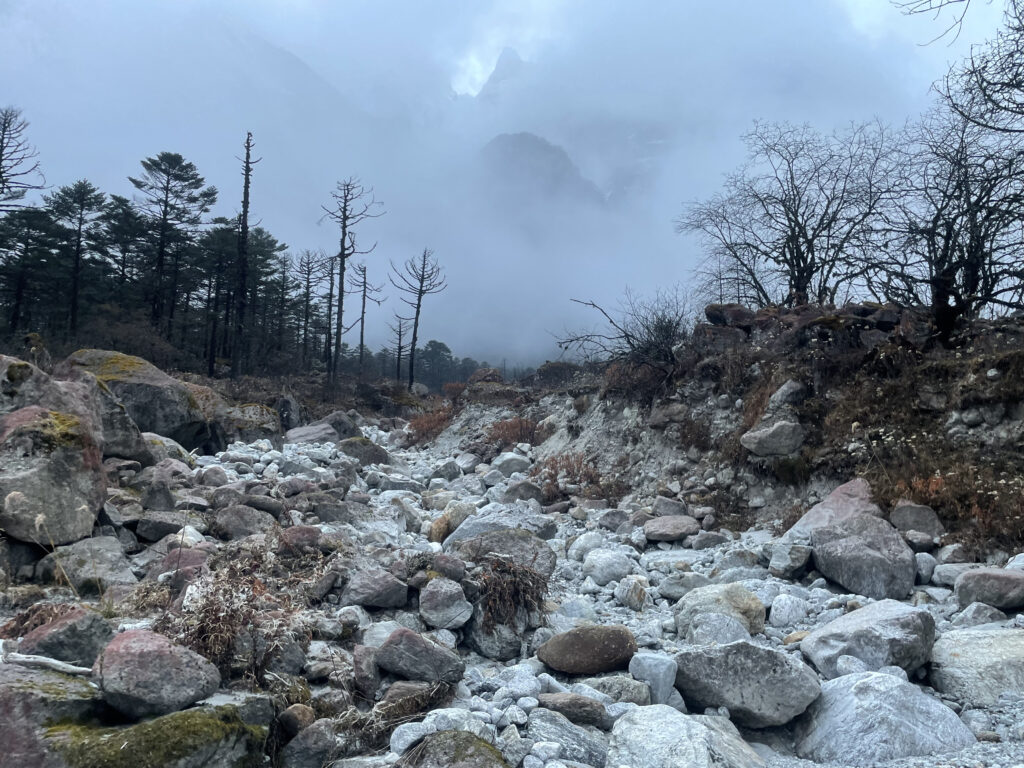
© Nazimul Islam, all rights reserved
In many occasions we found evidences of forest fire in the trees (Fig. 1). However, no such damaged trees were cored during the fieldtrips because our research goals are different, but looking at these trees, it gives ample opportunity to extend our research goals further and reconstruct forest fire events in the Himalayas.
On our way back to sampling position (SP) 2 from SP-1 we have encountered a massive landslide event (Fig. 2). However, this was not the only place where we spotted such chunk of snow, ice and debris slide down and blocked the river course.
Rockfall/avalanche paths (Fig. 3) were seen very often in our study area and as the local sources informed that these paths become active during the monsoon period (June-September) every year. These events damaged the trees externally (in the bark) and internally (in the rings, and cells) on their paths. Therefore, dating those damaged trees can help dendrochronologists to reconstruct these events in the past.
We are extremely thankful to the Swiss Polar Institute (SPI) for providing us the financial support under the scheme of Polar Access Fund 2022 to successfully conduct two proposed fieldworks in the Eastern part of the Himalayas.
Nazimul Islam is a doctoral researcher at the University of Lausanne. His fieldtrips took place in April-May and in November 2022 with the financial support from a Polar Access Fund grant.
Header photograph: Tree-rings after the sample processing. © Nazimul Islam, all rights reserved